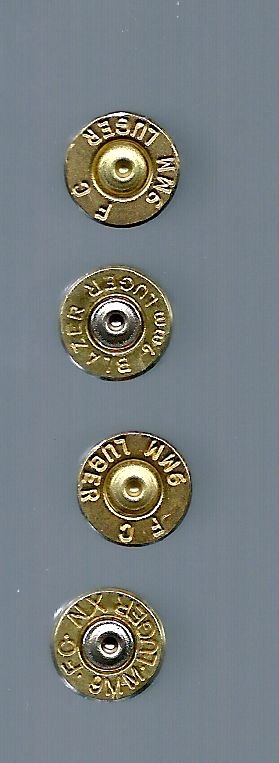Are these signs of too hot a load, do I need to back off?
But even the factory rounds have some apparent primer bulging. Notice the primers do not protrude from their pockets, the primers just look a bit stressed.
The cases near the base don't look bulged or stressed though, so maybe it's OK?
The cases with brass colored primers are factory rounds and the silver colored ones are my handloads with CCI primers.
All shot from a 92fs
125gr FMJ
4.2 gr W231
OAL=1.143-1.147.


But even the factory rounds have some apparent primer bulging. Notice the primers do not protrude from their pockets, the primers just look a bit stressed.
The cases near the base don't look bulged or stressed though, so maybe it's OK?
The cases with brass colored primers are factory rounds and the silver colored ones are my handloads with CCI primers.
All shot from a 92fs
125gr FMJ
4.2 gr W231
OAL=1.143-1.147.


Last edited:




